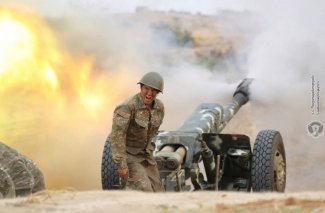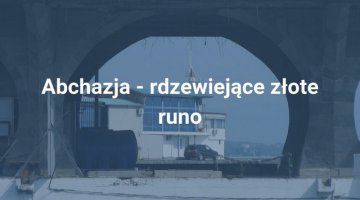Nagorno-Karabakh: positional warfare begins

The intensive fighting between Azerbaijani and Armenian forces, initiated by Baku on Sunday 27 September, is continuing. The clashes are focused in particular on the northern and south-eastern sections of the line separating the Baku-controlled areas from the Yerevan-backed separatist Nagorno-Karabakh Republic (NKR). After Azerbaijan’s initial successes – the capture of seven non-strategic villages & a certain number of combat positions, and the probable capture of an important peak in the Murovdag range – the situation on the front has stabilised. The Armenian side reports that they have regained some of the positions they lost, although the Azerbaijani side has denied this claim. The town of Vardenis in eastern Armenia came under shell fire; Yerevan, for its part, has denied a report about an artillery attack on targets in Azerbaijan. International opinion is expressing increasing concern about the crisis. On 29 September, the UN Security Council held a closed session on this matter; the leaders of both countries held telephone conversations with French President Emmanuel Macron and German Chancellor Angela Merkel, among others; and offers of assistance in the negotiations were made by Georgia and Iran, among others (although the OSCE Minsk Group’s leading role in peacefully resolving the conflict has not been undermined). Turkey has adopted an unequivocally pro-Azerbaijani position and called the current status quo into question. In a series of harsh statements, Ankara has called on the Armenian side to make concessions and offered political and military support to Baku (even though the specific dimension of Turkey’s military aid remains a matter of guesswork). For its part, Russia has indeed been conducting intensive consultations, although so far it has not put forward any public initiative of its own (as happened during past escalations of the Nagorno-Karabakh conflict), and is limiting itself to appeals for a ceasefire and a return to talks.
Commentary
- Baku claims that the operation is a response to provocations by the NKR (while Yerevan has reported a massive attack on Armenian positions). It seems that the Azerbaijani government was principally inspired to launch this latest offensive by the stormy and spontaneous pro-war demonstrations that took place in Baku this July on the wave of a previous escalation of tensions (there was fear that public sentiment might run out of control; however, any substantial success would significantly strengthen the legitimacy of President Ilham Aliyev). The government’s decision could also have been influenced by the support shown it by Turkey, as well – perhaps – as the assumption or expectation that Russia would adopt a moderate position. The current escalation is unprecedented due to the size of the fighting, the shelling of the NKR’s capital of Stepanakert (Azerbaijani: Khankendi, Xankəndi) for the first time since the armistice in 1994, as well as the state of war and military mobilisation announced in both countries and the Nagorno-Karabakh para-state.
- The ongoing clashes have now turned into positional warfare, limited mainly to artillery and rocket fire, including the use of air assaults (with much use of drones). Since the first day of operations, Azerbaijani land operations have been either halted or radically limited. This seems to have happened when, despite some of the above-mentioned successes, the attempts to launch a Blitzkrieg (if indeed that was the plan) and capture some of the more significant separatist-controlled areas during the first strike failed. One indirect confirmation that a strategic peak in the Murovdag range may have been taken is the Armenian side’s closure to civilian traffic of a stretch of the northern (shorter) road linking Yerevan with Nagorno-Karabakh which runs several kilometres from the peak, together with the approach to the town of Kalbajar, which is located between Armenia and the former Nagorno-Karabakh Autonomous Oblast (see Map). It seems that the blockade of this road – which would have made it more difficult for Armenia to supply the NKR – was also aided by shelling the town of Vardenis, through which it runs. It should be noted, however, that information about the situation on the front comes from official announcements alone, and both countries have been carrying out intensive disinformation activities. The conflict zone is subject to an information blockade, and there are no independent journalists or observers in the area. For this reason, one should also be cautious about both sides’ reports on the losses they have inflicted on their opponents, which allege that hundreds have been killed and very large amounts of equipment damaged.
- Against the background of great interest and concern on the part of representatives of international organisations and world leaders about the escalation of the conflict (the statement by Donald Trump, the aforementioned talks conducted by Macron and Merkel), the numerous and frequent statements in recent days by President Recep Tayyip Erdoğan and other representatives of the Turkish government, declaring inter alia that military aid would be offered to Azerbaijan, sound unprecedentedly harsh. Turkish politicians are questioning the Nagorno-Karabakh status quo and calling for its revision: in their opinion, the Armenians should hand over those lands they have occupied and which de jure constitute Azerbaijan’s territory (Erdoğan has called on the Armenian public to oppose their own government). There is no confirmed evidence that Turkish armed forces have participated in this phase of the conflict. However, media reports (such as the report by Armenia – denied by Azerbaijan and Turkey – that a Turkish F-16 shot down an Armenian Su-25 attack aircraft, or that fighters have been imported from Syria), have now become a political fact which affects the course of events (the logic of the ongoing propaganda war also includes reports that Armenian forces are being supported by ethnic Armenians from Syria). Ankara’s long-term aim is to increase – at Russia’s expense – its influence in the Caucasus, and indirectly throughout its neighbourhood, as part of its assertive foreign policy, especially in the Middle East and the eastern Mediterranean. It seems that Turkey, by opting – or deliberately creating such an impression – for a military resolution to the Nagorno-Karabakh conflict, is aiming to influence the peace process at the same time. Ankara could achieve this by joining the group of co-chairs of the Minsk OSCE Group (Turkey already belongs to this body, as do 10 other countries, including the co-chairs France, Russia and the US – and both Armenia and Azerbaijan). However, this is unlikely to happen at the moment: it should be expected that both Moscow and Paris would oppose such a move.
- There are many indications that the reason for Russia’s restrained reaction is primarily its fear of the various costs it could incur, including the political price of any possible intervention, as well as its fear of having to begin a long-term presence in another hotspot in the area of the former USSR. Moreover, this escalation has come about at a very unfavourable moment from its point of view. It takes place at a time of increased tension in relations between Russia and the West over its attitude to the protests in Belarus, the poisoning of Aleksei Navalny and the prolonged conflict in Ukraine. At this stage, Moscow is therefore seeking to end the fighting and return to the status quo at the lowest possible cost and without any significant involvement on its part. It seems that Russia is prepared to bring about a ceasefire at the cost of minor territorial losses on the Armenian side, especially in the ‘occupied territories’ (the strip of land around the former Nagorno-Karabakh Autonomous Oblast). The Kremlin has been using the Nagorno-Karabakh conflict as an instrument to put pressure on Yerevan and Baku for years – Russia describes Armenia as a ‘strategic ally’ and Azerbaijan as a ‘strategic partner’ – and wants to maintain its position as the main player in the region. However, if the fighting continues on the current scale, this may force Moscow to act more severely against both Azerbaijan and Ankara, which indirectly supports Baku. This in turn may result in the opening of yet another front (after the Syrian province of Idlib and Libya) in Russia’s confrontation with Turkey. However, even in this scenario it seems unlikely that Russia would directly involve itself militarily on Armenia’s side: a casus belli for Russia here would be the direct and confirmed involvement of the Turkish army in the fighting, the possible collapse of the NKR, or an existential threat to Armenia. For now, one may see this as the initial phase of a so-called ‘proxy war’ waged by Moscow and Ankara through Armenia and Azerbaijan (the NKR’s leader Arayik Harutyunyan has stated directly that the Nagorno-Karabakh Armenians are fighting not against Azerbaijan, but rather against Turkey, as Ankara wants to destroy all of Armenia).
- Although an Azerbaijani offensive and the capture of important centres in the NKR cannot be ruled out in the current situation, this still seems unlikely. With the passage of time, it is becoming less and less likely that the fighting will end quickly or that matters will return to the status quo (with a possible slight adjustment of the contact line in favour of Azerbaijan, as happened in 2016); it is ever more probable, however, that hostilities will continue in the longer term, although they will mainly be positional in nature. The first option still cannot be ruled out, as the status quo seems the least unfavourable option for both Baku and Yerevan, as well as for Russia, and war would put the local economies, which have already been affected by the pandemic, under severe strain. However, an end to the fighting would suit Armenia, especially Nikol Pashinyan’s government, which is losing popularity in the face of intensifying domestic disputes (on 26 September Gagik Tsarukyan, a prominent oligarch and the leader of the opposition Prosperous Armenia party, was arrested for two months; the parliament stripped him of his immunity in mid-June); it would also strengthen the prime minister’s position as an effective defender of the homeland. In Azerbaijan, on the other hand, in view of the awakened public expectations, such a turn of events (despite the successes on the first day of the operation) would certainly be received with disappointment, which could in turn lead to an outbreak of protests difficult to control. Continued clashes could strengthen one or the other side on a temporary basis, depending on their course and duration. In this scenario, the Azerbaijani side would most likely try to continue the approach of harassing the enemy and, if possible, seizing more towns using ‘salami tactics’. This would deepen the internal crisis in Armenia, possibly resulting in a change of government. For this reason – in view of its limited resources and the real threat of a significant prolongation of the crisis – Yerevan is trying to internationalise the conflict, particularly by persuading Moscow to become more involved (Pashinyan’s determination has been demonstrated by his two phone calls to Vladimir Putin; meanwhile, Ilham Aliyev and the Russian leader have not spoken in recent days). If the clashes continue, this will also increase the risk of the whole region becoming destabilised, especially if Russia and Turkey become involved militarily. Such a scenario – while not very likely at present – could change the balance of power in the Southern Caucasus, and perhaps also in the neighbouring regions.
Map. Armenia and Azerbaijan. The area affected by the conflict over Nagorno-Karabakh (30 September 2020)






